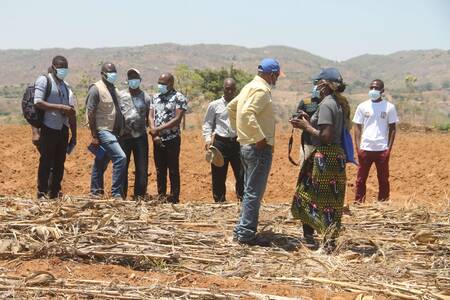Objectives
DRIP aims to capture, evaluate and share knowledge on dryland restoration, taking advantage of the significant gains in sustainable management and restoration that have been made by governments, local communities, non-governmental organizations, the scientific and research community as well as other stakeholders. These gains, successes and lessons learned, if identified and analysed, could inspire others. That, in turn, could lead to the replication and scaling up of successful efforts nationally, regionally and worldwide, including advancing implementation by governments and regional restoration commitments such as the global Bonn Challenge, AFR 100 and Africa’s Great Green Wall. To this end, DRIP hosts a tool that captures this information from users via an easy-to-understand questionnaire that can be completed in a few minutes.
Why Drylands?
Why Drylands?
These eco-regions are reservoirs of biodiversity and endemism whereby eight of the twenty-five global biodiversity hotspots are found in drylands. Even more, the global drylands contain 1.1 billion hectares of forest, which is 27 percent of the global forest area and approximately 4 billion hectares. Yet, demands on dryland forests and trees are high and rising, resulting in rapid depletion of resources, and ultimately leading to higher levels of land degradation and desertification. Well-tested restoration practices and techniques, both traditional and modern, can help us recover what has been lost while preventing further damage.
Following the estimation that, on average, the benefits of restoration are 10 times higher than the costs, this tool aims to facilitate the undeniable truth that, if properly managed and restored, Dryland forests and trees can help tackle global challenges such as poverty, hunger and climate change. The platform was developed after FAO conducted a comprehensive analysis, evaluation and documentation of afforestation, reforestation and restoration projects, programmes and initiatives in drylands. Following that analysis, the monitoring tool was tested and subsequently evolved and launched as the FAO Drylands Restoration Initiatives Platform to share knowledge and experience via the interactive web platform DRIP.
In a nutshell, DRIP will...

Document lessons learned on good practices in relation to LDN from the different transformation projects and programmes (TPPs).

Capture and share the importance of gender responsiveness, indigenous people and traditional knowledge within the LDN implementation efforts.

Facilitate communication and networking among restoration actors in drylands worldwide

Support donors to inform their funding decisions on the LDN projects and Programmes.

Support practitioners and decision-makers in strengthening their baseline datasets about current initiatives and consequently to fine-tune their interventions and opportunities to achieve LDN targets.
How it works – Linking the cloud with the ground

DRIP is structured around project design, implementation, and completion. During each project phase, restoration practitioners will be able to input a range of data and information into the platform, including the key characteristics of the area, project activities, objectives and results.
Through DRIP, anyone involved in restoration initiatives in the drylands can report on their progress using the tool’s brief and accessible questionnaire. The questionnaire then outputs standardized data for users to track and report on progress, to examine the contribution of specific project elements and to design new and improved local projects.
DRIP also enables aggregation of data at country level to provide an overview of activities’ contribution to Land Degradation Neutrality targets. Finally, information completed by the project manager will be publicly accessible through the FERM platform.
Paving the way to holistic monitoring with an improved DRIP
The importance of revamping this tool was endorsed by the Committee on Forestry Working Group on Dryland Forests and Agrosilvopastoral Systems (COFO WG) during its inaugural meeting held in Rome in July 2019. Here, country members and experts acknowledged the need for such a tool for documenting and monitoring on-the-ground restoration activities in Dryland eco-regions. Further understanding the output of this tool to enhance informed decision-making, prioritization of interventions and efficient project planning. The COFO WG also provided guidance on how to ensure this tool became a more comprehensive and easy-to-use monitoring tool, advising that the development of this platform should be tested and linked with national data and existing information platforms to strengthen the national and regional information systems.
As a result, after identifying information to be collected from projects, DRIP and FERM are now being piloted with project managers in twenty-five countries to test the relevance of information and user approach of the platform. DRIP will also explore opportunities to be recognized as one tool of the ‘tool box’ facilitated by the GEO LDN Initiative, a collaborative platform to bring all LDN relevant tools together. The DRIP will then be revised to integrate user's feedback and will eventually be piloted with additional countries.
The objective is to inform the development of resource-efficient and fit-for-purpose monitoring systems that generates quality data and information and supports domestic restoration needs and other reporting processes with strong ownership by governments, and restoration stakeholders.
The DRIP platform is currently in a test phase, available only in English, and will be launched more broadly and made available in French and Spanish in the coming months. For more information, please write [email protected].


